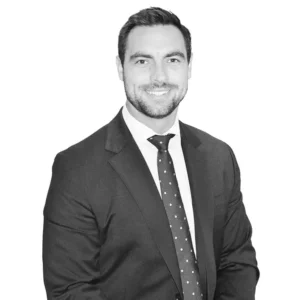Your Financial Lens
As an investor, it’s impossible not to have your own personal financial experiences color the way you see investing and planning.
David Bahnsen has shared his own investing biography numerous times and has specifically expressed how the bursting tech bubble of the early 2000’s led him to adopt the dividend growth philosophy that is so deeply embedded in The Bahnsen Group’s culture. An investor can’t afford to risk their financial future on the speculation of price appreciation, so Dividend Growth investing was and is the antidote for the Lost Decade (the price of the stock market was nearly the same from the start of 2000 to the end of 2010).
In planning discussions, I typically try to be upfront and submit my biases. I like to walk through my experiences and give background for how I came to some of these different conclusions and beliefs. Ultimately, many financial planning decisions will come down to preference. One must measure the impact of each of these decisions and prioritize based on their preferences.
Memory Lane
With this backdrop set, let’s take a little stroll down my own financial memory lane. When I graduated High School, I submitted only one college application. I didn’t have anyone pushing me towards college or encouraging it, so when I received the acceptance letter from Chico State, I just put it in the trash and pursued my dream to compete as a professional BMX racer. After a handful of injuries and not enough money to put gas in my car or pay rent, I decided I needed to pivot. So, I found a job, a job I would work at for the next 7 years. I remember looking up the corporate ladder at my superiors and deciding that I didn’t aspire to that future, but I felt stuck – I had no other experience or education.
At 26 years old, I decided I should get a college degree. Whether I was right or wrong, at that time, I believed that this degree would help to expand my future opportunities. I would go on to finish my bachelor’s and master’s degrees. In this season of life, I had a lot of decisions to make regarding my education – the most important of those being where I would attend. The “where” decision would come down to what I could afford both with my money and my time.
I decided to pay-as-I-go, so this did limit me to only enrolling in after-work courses and only taking the number of units that I could afford. As you know, tuition expenses vary by university. So, based on these filters of cost and available courses, I was limited in what choices I had.
No Regrets
Don’t get me wrong, I am very fond of my experience and the schools I attended (Biola and CSUF), but they were not my first choice. So, if I could do it all over, would I change anything about what I did? I have to say no because it made me who I am. Figuring out how to balance the expenses and my calendar taught me how to budget and to work hard, these are skills that equipped me to lead my family and build a successful career. Yet, there is a part of me that wants to provide optionality for my kids and future generations, which is why I probably have a little bit more spark and excitement about 529 plans than your average advisor.
The 529
A 529 college savings plan is an investment account that allows you to set aside money for qualified education expenses. These monies grow tax-free and distribute tax-free when used for these qualified expenses. Some states even allow a tax deduction for contributions.
So, based on these rules and guidelines, how would one maximize the benefits of a 529 plan? Well, the benefit is NOT having to pay taxes on the capital gains and income that is compounding in the 529 accounts. So, by definition, maximizing this benefit would be to create the greatest gap between the basis (what you contribute) and the value, which represents the gains plus the basis. This would yield the greatest tax avoidance. To brand this into our memory, we will call this Maximizing the Gap. Again, the tax-free gap between what the 529 is worth and what you put into it.
For someone (me) who was limited in their education choices based on affordability and availability, a 529 plan would’ve been a great blessing. I don’t have a time machine, so there is no going back on my behalf, but I can work on Maximizing the Gap for future generations.
Compound Interest is the Eighth Wonder of the World
One of the most potent ingredients in investing is time. Great financial planners are very future-minded; they know how powerful a dollar saved today and compounded for many years can be. This is why my family is seeking to “overfund” 529 plans. We want to (1) give our kids optionality when it comes to their education choices (2) create a lifetime education pension for future generations and (3) glean the benefits of avoiding taxes to accelerate the compounding of these funds. Remember, you can change the beneficiary on a 529 plan, which gives you, the investor, a lot of flexibility.
The TOM Theme
You should be picking up a theme here. In recent weeks, I shared my frustrations with healthcare and health insurance and then explained a long-term planning solution (see: Health Insurance and I Are Not Friends). Today, I shared my experience and limitations around education, then shared my long-term planning solution. Key words here: problem > long-term plan > solution. As I mentioned, planners are future-minded, and they leverage the power of time to craft impactful solutions. You don’t want to miss this truth – the application is unique (healthcare, education, etc.), yet the process is nearly identical. THIS. IS. PLANNING.
Who is awarded the luxury of this type of planning? Those with leftovers (see: Planning for Leftovers). When you earn above-average income, when you sell a business for a meaningful sum, when you inherit wealth, when you have below-average spending or any other circumstance that creates more money than is needed, then you have the opportunity and the responsibility to entertain this type of planning.
So, if you have an interest in creating a legacy family scholarship program of sorts, then 529 plans are worth exploring. Again, when maximizing the gap, you can avoid taxes and accelerate the compounding of these monies. You also get to exclude these monies from your estate – a HUGE benefit for those wrestling with estate tax issues. Now, to be fair, you will want to consult your trusted advisor to understand all the nuances – funding amount limitations, potential generation-skipping taxes, etc.
Your Financial Wish List
With greater wealth comes greater responsibility. This stewardship component can feel like a heavy obligation to carry, yet with some thoughtful planning and a clear understanding of your preferences, there is a solution out there to be found. I hope these discussions around how to plan accompanied by real application are helpful.
I started today’s discussion with this reminder that we all see money and planning through a lens that has been colored by our own experiences. I would encourage you to take a mental inventory of your own timeline and work to connect the dots of what experiences have impacted how you see money and what potential riddles/problems you’d like to solve. Begin to craft a financial wish list and see if you can’t start to align your leftovers towards those aspirations.





